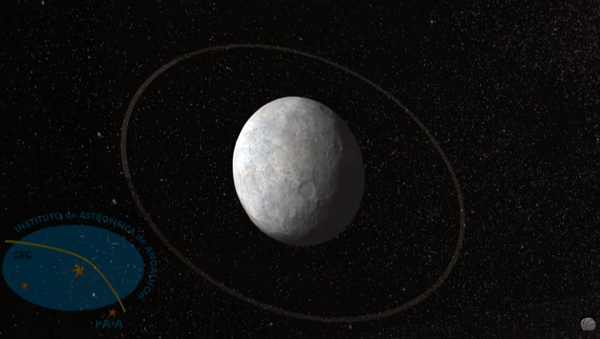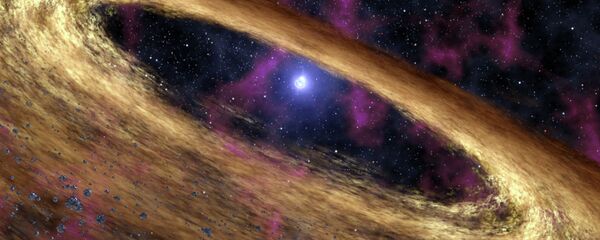The planet, which sits on the edge of the solar system, has a ring roughly 70 kilometers wide, with a radius of 2,287 kilometers.
The discovery was made through the efforts of an international group of astronomers trying to characterize Trans-Neptunian Objects, aka objects that are farther from the sun than Neptune, the LA Times reported. Existing as they do in the vast Kuiper Belt of icy and rocky debris beyond Neptune, Trans-Neptunian objects like ex-planet Pluto and Haumea are also appropriately called Kuiper Belt Objects.
"It is the first time a ring has been discovered around a Trans-Neptunian object," José Luis Ortiz, a researcher on the project, said in a statement. "It shows that the presence of rings could be much more common than was previously thought, in our solar system as well as in other planetary systems."
Published in the Nature journal Wednesday, officials relied on data collected by 12 telescopes based in several counties including Italy, Germany, Hungary, Slovakia and the Czech Republic, the Times added.
However, even with the help of the scopes, scientists had to wait for Haumea to pass in front of a star to get visuals on the planet due to its vast distance from Earth and low brightness.
"We predicted that Haumea would pass in front of a star on the 21st of January 2017," Ortiz added. "And 12 telescopes from 10 different European observatories converged on the phenomenon."
"The subject holds important clues on the formation of the solar system because they are the remnants of the formation of the solar system," Ortiz said.
But the newly found ring isn't the only feature the Neptunian object houses — it also has two moons and has an unusual shape resembling a rugby ball, officials say.
Back in 2008 the rugby ball-like planet was recognized by the International Astronomical Union and became one of five dwarf planets, which include Pluto, Ceres, Eris and Makemake, the Guardian reported.
Haumea is named after the matron goddess of Hawaii island, atop which the Mauna Kea observatory, from which the planet was discovered, is located.




